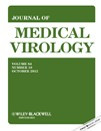Tachezy R, Hrbacek J, Heracek J, Salakova M, Smahelova J, Ludvikova V, Svec A, Urban M, Hamsikova E. J Med Virol. 2012 Oct;84(10):1636–45. doi: 10.1002/jmv.23367. IF: 2.82

Department of Urology
Abstract
HPV has carcinogenic effects at several anatomical sites in women and men. Whether the presence of HPV in the genitourinary tract of men is associated with a higher prostate cancer risk has been a matter of research for a long-time and the results are still not fully conclusive. Similarly, the question of the reservoir of HPV infection in men is not clearly resolved. HPV DNA presence and types were evaluated by means of polymerase chain reaction in the tissue of 146 patients with benign prostate hyperplasia and prostate cancer. HPV-specific antibodies were analyzed by enzyme-linked immunosorbent assay in the sera of all patients and 172 controls. In addition, 256 biopsies taken from non-tumorous tissues were analyzed. No statistically significant differences were observed in HPV DNA prevalence between patients with benign prostate hyperplasia (2%) and patients with prostatic cancer (2%; P = 1.000). The seropositivity rates did not differ significantly between groups of subjects except for antibodies against HPV 6 VLPs which were found more often in prostate cancer patients (adjusted P = 0.018). Similarly, no difference in the seroprevalence rates for HPV 16 E6 and/or E7 oncoproteins between groups of patients and healthy controls was detected. The overall HPV prevalence in 256 healthy tissue samples was 4%. The results indicate that HPV infection is not associated with prostate oncogenesis in men. However, they imply that multiple tissues of the male genitourinary tract may be important reservoirs for the transmission of some HPV types.
-Michaela Kotrová-
